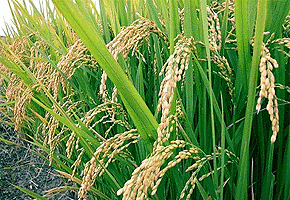
By Allan Barber
 For some strange reason I recently received a research report from India on the Basmati rice industry.
For some strange reason I recently received a research report from India on the Basmati rice industry.
But never having previously thought of the rice industry’s dynamics – financial, production or marketing – I found it fascinating reading.
I hope some of Interest.co.nz’s readers will share my excitement.
Basmati occupies a small premium niche within the global rice industry, representing 1.5% of total volume, but 2.1% of value.
It can only be sold under the Basmati name (or appellation) if it has been grown in designated parts of India and Pakistan, the Indo-Gangetic area of the Himalayas. India produces 72% and Pakistan 28% of total Basmati production.
After wheat and maize or corn, rice is the third largest staple food produced in the world, 90% of it produced in Asia and 80% of it consumed there as well.
The biggest exporters are India, China and Indonesia. Rice is grown in two main types: long-grain Indica, including Basmati, which is fluffy and doesn’t stick together and short-grain Japonica, sticky and moist. All rice can be consumed in three forms – white, brown retaining the bran and par-boiled which reintroduces nutrition from bran by additional boiling and is popular in the Middle East.
Within the overall rice category Basmati commands a premium of about 65% or US$400/ton because of ageing, a higher proportion of head (whole) grains and its aroma.
Also since 1999 when India’s Geographic Indications of Goods Act was introduced and an American company’s patent withdrawn, legally there can be no competitors from outside the restricted region.
Compound Annual Growth since 2001 has been at 10.4% which is encouraging.
But despite this premium market position, life as a producer and exporter of Basmati rice is not as rosy as I would have thought it should be.
For a start there has been virtually no product or brand differentiation between the different companies, while the success of a new variety, PUSA 1121, introduced within the last 8 years has made Basmati more homogeneous and less able to be differentiated.
The new variety has almost everything – greater length of grain, better yield, shorter maturation time, less water and fertiliser, therefore higher income – but the one thing it lacks is aroma. However the improved economics from PUSA 1121 have cannibalised traditional Basmati and now represent 70% of production which is particularly important in years like this year when the monsoons don’t meet expectations.
Consequently manufacturers that used to be able to use their knowledge and skill to select finer varieties of Basmati can no longer afford to do this because of the homogeneity of the new variety, increasingly popular among growers. It has also succeeded in expanding the total market.
The point of this interesting research report was to conduct an assessment of the performance and market value of the two major Indian producers, REI Agro and KRBL, in anticipation of a tightening credit climate. Working capital tends to be tied up in inventory, especially because of the requirement to age paddy (unprocessed rice) and rice for six months. It is not clear whether this is still necessary with PUSA 1121, but it appears so, despite its lack of aroma.
It seems that REI Agro has had plenty of access to working capital, as well as raising plenty of debt which leads the research analyst to question the present share price. When you read that its capacity won’t be fully used until 2018, inventory days are 420, receivables at 113 days, and interest cover 1.6 times, I reckon the analyst is right.
KRBL in contrast has better capacity utilisation, 360 days inventory, receivables 55 days and 2.6 times interest cover. While not earth shattering, its metrics are much better and yet the share market undervalues this company based on a Private Market Value calculation used by the research company.
The analyst warns of possible inventory write-downs across the industry, but especially by REI Agro.
So in a nutshell the Basmati rice sector is a growing niche market, but there’s plenty of opportunity for performance improvement among the processors, nothing that some tight management discipline couldn’t bring about.
However the reliance by the industry on a new variety which removes the capacity to differentiate, except by brand marketing, makes me think the introduction of foreign ownership can’t come soon enough.
Unilever or Kraft could achieve wonders.
--------------------------------------------
Allan Barber is a commentator on agribusiness, especially the meat industry, and lives in the Matakana Wine Country where he runs a boutique B&B with his wife. You can contact him by email at allan@barberstrategic.co.nz or read his blog here »

We welcome your comments below. If you are not already registered, please register to comment
Remember we welcome robust, respectful and insightful debate. We don't welcome abusive or defamatory comments and will de-register those repeatedly making such comments. Our current comment policy is here.